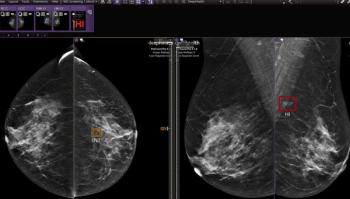
New Technology, Information Help Women Learn About Breast Density
Studies show current breast density education has conflicting results.
Approximately 40% of women have dense breast tissue that can make it harder to
Currently, 27
DBNs: Works in Progress
Research related to the impact of DBNs in the U.S. shows variation in both standards and impact. A recent study published in the
According to a recent study published in
Additionally, the information provided in the DBN will vary; depending on the state they live in. Some states require that women be informed if their breasts are dense and that additional screening might detect breast cancer while others require only that women be informed about the issue of breast density, without providing context regarding the potential implications.
But the variability in DBNs from state to state is leading many experts in women’s health to call for new national standards in communications to women regarding breast density. They further reinforce that these communications are not meant to replace the dialogue between patients and doctors related to breast density, but rather to inspire more accurate, educational discussions on this important topic.
New Technology Offers Advanced Solutions
It’s important to note that DBNs can only be effective if breast density assessments are accurate. A recent study published in the
New technologies are available from several companies such as iCAD and Volpara that assist in overcoming the challenges associated with reader variability by providing a more precise breast density assessment. For example, iCAD’s PowerLook Density Assessment automated breast density solution uses an appearance-based approach (versus volume-based) that categorizes breast density based on the structure, texture, dispersion, and volume of fibroglandular tissue. Automated breast density software technology can help radiologists identify patients who might benefit from additional screening, such as ultrasound or MRI. It can also help streamline workflow for radiologists and medical practices. These technologies can help more women get the additional testing they need, while helping many avoid unnecessary and costly medical procedures.
As new technologies emerge, and as more states work to improve and standardize the information provided in their DBNs, patients and radiologists are gaining a better understanding of breast density and its impact on the risk of developing and identifying breast cancer. Together, these advancements may be able to help us accurately detect many breast cancers earlier, when they might be more easily treated.
Newsletter
Stay at the forefront of radiology with the Diagnostic Imaging newsletter, delivering the latest news, clinical insights, and imaging advancements for today’s radiologists.




























